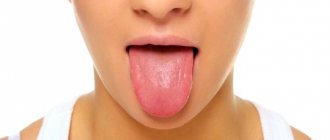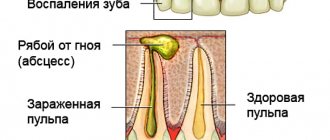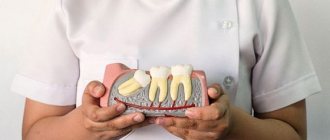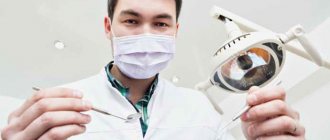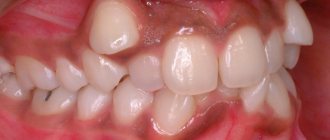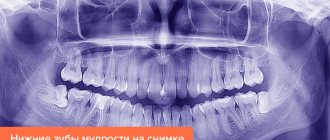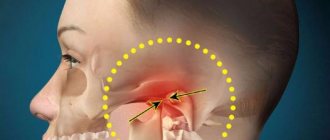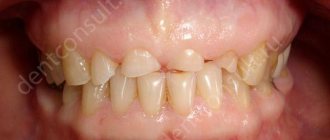Types of pain
Patients who consult a doctor describe a wide variety of conditions, accompanied by associated symptoms. Headaches can be aching, pressing, shooting, sharply expressed and blurred.
Each type of cephalalgia is characterized by certain symptoms, and additional signs indicating a certain type of pathological process occurring in the body. Often the pain is accompanied by strong pulsation in the temples, which patients associate with the blows of small hammers, which prevent them from being distracted and falling asleep.
According to the nature of the mechanism of pain formation, they are divided into:
- On vascular, caused by spasm of the aorta or its expansion, as well as decreased tone of the veins.
- Muscular, which occur when the activity of transmission of nervous excitation increases.
- Neuralgic.
- Liquorodynamics associated with fluctuations in intracranial pressure.
- Central, when the above listed mechanisms of pain are absent.
- Mixed, caused by several processes occurring simultaneously.
As you can see, there are many causes and types of pain. That is why it is important to carefully collect anamnesis during diagnosis. The doctor will have to find out exactly how the headache hurts, what sensations the patient experiences before, during and after the attack, what can trigger the onset of exacerbations, and what additional symptoms are noted.
However, this information is not enough to establish the causes, so laboratory and hardware examinations are carried out.
To understand the pathological processes and understand what can cause pain in the temporal region, you need to have an idea of the anatomical structure of this part of the skull.
It consists of several bones - parietal, zygomatic and frontal. Muscle and subcutaneous fat tissue, nerves, blood and lymphatic vessels. The temporal bone connects to the lower jaw, forming a joint that takes an active part in chewing movements, swallowing, and speech functions.
All of the listed structures - muscles, nerves, bone tissue, veins, arteries, lymphatic vessels, meninges - can become inflamed. In addition, pain can be caused by various pathologies of nearby organs - hearing, vision, smell.
In addition, the causes of cephalalgia can be intoxication with chemicals, alcohol, drugs, medications, as well as increased radiation.
Among the external factors that cause headaches, it should be noted poor nutrition, physical inactivity, fasting while following an irrational diet or lack of adequate nutrition, and prolonged stay in a room with limited oxygen access. As well as nervous stress and overstrain of a mental and physical nature, can cause the development of cephalgia, including bilateral temporal pain or pain concentrated on the right or left.
As well as diseases of the kidneys, liver, pancreas, as well as metabolic disorders occurring in the body, causing obesity. Changes in hormonal levels can also lead to the development of cephalalgia - diabetes, the formation or disruption of the menstrual cycle, menopause, pregnancy can trigger headaches. As you can see, there are quite a few causes of cephalalgia. To save the patient from suffering, it is necessary to correctly determine what caused it, and treatment should be aimed at eliminating the root causes, and not relieving symptoms. For this purpose, diagnostics are carried out, including laboratory and hardware tests, questioning and examination of patients.
Neuralgia
The glossopharyngeal nerve is one of twelve cranial nerves and has both motor and sensory fibers. JAN neuralgia develops as a result of various pathological processes, among which are:
- aneurysms of the internal carotid artery;
- chronic tonsillitis;
- chronic intoxication of various types;
- tumors of the cerebellopontine angle;
- laryngeal tumors.
Stylohyoid syndrome remains one of the common etiological factors. The pain is most often explained by trauma to the tonsil by the enlarged styloid process. Calcification of the stylohyoid ligament is also important. In addition, there are suggestions about the connection of neuralgia with atherosclerosis.
The pain always occurs only on one side and is accompanied by dry mouth, which after the end of the attack is replaced by profuse salivation (salivation) - also one-sided. Yawning is not the only provoking factor; moreover, it leads to an attack less often than talking, swallowing, or irritation of the root of the tongue and tonsils (these are the so-called trigger zones).
The pain is severe, it is described as burning, shooting, stabbing, reminiscent of an electric shock. It appears suddenly and lasts for a short time - usually up to several minutes. In this case, attacks can be repeated one after another. During an attack, the patient may lose consciousness, which is explained, however, not by the intensity of the pain, but by irritation of one of the nerve branches and inhibition of the vasomotor and respiratory centers.
A characteristic feature of neuralgia is the connection of pain with a provoking action (for example, yawning) and the rapid cessation of the attack.
The classic course of neuralgia JAN is considered to be wave-like: an acute onset is followed by remission of varying duration. In the future, the disease progresses, painful attacks appear more often and can become almost constant, which significantly worsens the patient’s condition. At the same time, the intensity of the pain syndrome increases.
Possible causes and associated diseases
Headaches affect 75% of the world's population. This condition becomes a frequent reason for seeking medical help. However, international practice shows that a large percentage leaves the problem unattended and does not consult a doctor.
With all the variety of uncomfortable sensations, patients often complain of soreness in the temple area. This may be associated with various pathologies, so before starting therapy it is necessary to carry out a diagnosis to differentiate:
- arterial hypertension;
- cervical osteochondrosis;
- migraine.
Often the temple may hurt during depression. In women, this condition is caused by hormonal surges, for example, before menstruation or during menopause. If a patient complains that her temple hurts when chewing, the reasons should be sought in other pathologies. For this purpose, laboratory and hardware examinations are carried out, and a detailed anamnesis is collected.
Pain in the temporal region cannot be ignored, since arthritis can lead to blindness without proper therapy. Patients complain that their temple hurts when I chew. They experience redness of the scalp. The temporal arteries become denser and protrude, the pulse cannot be felt in them, and pain is felt when pressed. In addition to the main symptoms, the condition is accompanied by additional ones. Patients may complain that their tongue or tooth hurts when chewing food and swallowing.
Meanwhile, this is not the only reason when unpleasant sensations are concentrated on the left side of the head in the area of the temple, eye and upper jaw. This condition is typical for migraine, in which accompanying symptoms are weakness, heightened sense of smell, causing nausea and vomiting. In addition, the pain is aggravated by exposure to sharp sounds and bright light.
Weather-dependent people may also get a headache on the left side when the weather and atmospheric pressure changes, on days of magnetic storms.
Other external factors can also influence a person’s condition. For example, when climbing mountains or diving to great depths, discomfort is noted in the temporal region. This is due to the pressure difference.
Osteochondrosis of the cervical vertebrae, caused by salt deposition, is another cause of cephalgia in the temporal region. The mechanism of the disease is compression of the blood vessels supplying the brain and disruption of intracranial pressure and the flow of cerebral fluid. In this condition, there is a lack of oxygen. This causes aching pain on the right or left.
A stroke can also cause similar symptoms, which are accompanied by disturbances in orientation, consciousness, speech, and partial paralysis. It should be noted that stroke - vascular rupture occurs more often in the left hemisphere.
In addition, brain tumors can cause unilateral temporal pain. The condition is accompanied by decreased memory, impaired vision, hearing, and absent-mindedness.
Infections such as tonsillitis, sinusitis, flu, otitis media, and inflammation of the dental nerves can also cause pain on the left side. They become more intense when bending, turning and sudden movements. Characteristic signs of sinusitis are increasing pain during a change in ambient temperature, for example, when a person goes out into the cold or, on the contrary, returns from the street to a warm room.
Temple and eyes hurt - causes
Temples and eyes can hurt for the following main reasons:
1. Impaired cerebral circulation. This is one of the most common reasons why a person’s temples and eyes begin to hurt. Spasms in the blood vessels provoke a malnutrition of the brain, which causes severe pain in the head.
The following factors provoke circulatory disorders:
• concomitant serious illnesses (diabetes mellitus, heart disease, etc.);
2. High blood pressure is the second most common cause of pain in the temples and eyes. People over thirty-five years of age are most susceptible to this condition.
Hypertension (arterial hypertension) is characterized by headache, a feeling of throbbing in the temples, nausea, pale skin and dizziness. If this condition is not treated, then attacks of high blood pressure may be accompanied by loss of consciousness and a sharp decrease in cerebral circulation, which increases the risk of developing a stroke.
The causes of high blood pressure can be:
• excess weight;
• hormonal imbalance;
• poor nutrition.
3. Colds (ARVI, flu). Typically, a headache in this condition bothers a person at the very beginning of the disease.
4. Migraine is a vascular disease, the main cause of which has not yet been established. Its attacks are characterized by throbbing pain in the temple, which is usually localized on one side of the head. In addition, migraines are sometimes accompanied by eye pain, photophobia and nausea.
5. Poisoning can cause pain in the temple and eye. Today, you can get poisoned not only by inhaling chemical fumes, but also by consuming food products that are “generously” seasoned with all kinds of preservatives, dyes and additives. In addition, severe poisoning of the body can be caused by an ordinary spoiled product.
In addition to pain in the temples, signs of poisoning include nausea, vomiting, abdominal pain and severe weakness.
6. Arteritis. It can cause headaches that last for 3-4 hours. In more advanced cases, this disease can cause vision impairment.
7. Tension cephalgia. This disease usually occurs in adults. It is caused by severe nervous tension. With tension cephalia, a person suffers from pain in the temples that occurs when turning the head. Sometimes symptoms are accompanied by nausea and vomiting.
8. An abscess is a very strong infectious process, which is accompanied by the accumulation of pus in the outer and inner parts of the alveolar zone. This disease is extremely dangerous. It is characterized by the following symptoms:
• loss of appetite;
• heat.
9. Neuralgia can cause pain in the temples and eyes. At the same time, the nature of the pain is sharp, shooting. Unpleasant sensations are paroxysmal and short-lived. They can also repeat for several days in a row.
10. Adenoiditis is a disease in which the tonsils become severely inflamed. This condition can cause dull pain in the temples, weakness and dizziness. It requires drug treatment, especially in young children, since adenoiditis develops much faster in them and lasts longer.
In addition to the above diseases, the temple and eye can hurt for the following additional reasons:
1. Anemia is a condition in which a person has a decreased amount of hemoglobin and red blood cells in the blood. Symptoms of anemia include paleness, shortness of breath and loss of appetite.
2. Infectious diseases (tonsillitis, sinusitis, tonsillitis, etc.) can cause pain in the temple and eye.
3. Pain of psychogenic origin that occurs due to stress. Usually the nature of such pain is aching. The temples can ache for hours, preventing a person from concentrating.
4. Pain in women during menstruation, as well as during menopause. The reason for this is a hormonal imbalance in the body.
5. Cluster pain (of unknown origin).
6. Severe emotional or physical fatigue.
7. Diseases of the musculoskeletal system (osteochondrosis, arthritis, arthrosis, etc.) can cause pain in the temples. This is easy to explain: with such diseases, blood vessels are often compressed, which leads to pain in the eyes and temples.
We invite you to read “How to get white teeth at home without harming the enamel?”
8. Ophthalmological diseases can cause sharp pain in the eyes and temples. It is important to know that such diseases must be treated, otherwise, in an advanced state, some of them can lead to vision problems and blindness.
9. The development of an intracranial hematoma can occur after a head injury or concussion. In this case, the person will be very weak, he may experience pain in the eyes, nausea and dizziness. This condition requires immediate diagnosis and surgical or drug treatment.
10. Very often, pain in the eyes and temples is a harbinger of a developing stroke. For this reason, if such symptoms occur, you should immediately consult a doctor.
11. Meningitis. It may be accompanied by constant pain in the temples, which also spreads to the eyes, ears and neck.
12. The development of oncological pathology of the brain can cause pain in the temple and eye. In this case, the nature of the pain will be throbbing and aching. Such symptoms can develop for quite a long time, during which a person will feel a deterioration in his condition. In addition, additional signs of brain tumor development are:
• visual impairment;
• epileptic seizures.
Diagnostics
To find out why your temples hurt so much when you chew, you need to undergo an examination. Modern medicine has various diagnostic methods that make it possible to accurately determine the causes of discomfort in the upper part of the head. And, therefore, prescribe adequate treatment.
Diagnosis of injuries comes down to collecting an anamnesis, during which the doctor needs to find out the nature of the injuries received. During the examination, you should pay attention to the condition of the skin, determine the presence of hematomas, tumors, abrasions and scratches.
After a conversation with the doctor, the patient is sent for an X-ray examination, which can identify fractures or cracks. Determine their location. Dislocation is determined upon examination. Characteristic signs are a wide open mouth and the inability to speak. With severe bruises, dizziness and loss of consciousness are noted, and nausea and vomiting may indicate a concussion.
Diagnosis of pathologies of the jaw joint is carried out by collecting anamnesis and visual examination of the patient. In this case, attention is drawn to facial asymmetry, the presence of swelling, and the mobility of the lower jaw is assessed. Hardware examination involves X-ray, CT, orthopantomography, artoscopy.
If an infectious disease is suspected, in addition to collecting an anamnesis and examining the patient, a number of laboratory tests are performed. Blood counts will help determine the presence of an inflammatory process. During the examination, the doctor pays attention to the condition of the patient’s skin, identifies redness, swelling, and palpates the lymph nodes, which, when inflamed, should be firm, enlarged and painful. It is important to find out whether dental treatment was performed and for what reason. Often, incorrectly administered therapy causes inflammation.
When examining patients with complaints of pain during chewing, the doctor must pay attention to the condition of the mucous membranes of the oral cavity. The presence of ulcers may indicate the development of stomatitis and gum inflammation.
Often diseases of the ears, nose and throat cause discomfort in the temple area. Therefore, patients with complaints are referred to a laryngologist for consultation.
If a brain tumor is suspected, CT and other hardware examinations are performed, as well as cytological analysis and biopsy of tumors and lymph.
Author of the article: Neurologist Konstantin Olegovich Makheev.
Source
Treatment options
Mild pain is dealt with by rinsing with warm salt water, decoctions of anti-inflammatory herbs, and roots. Warm the throat with alcohol compresses, breathe over the potatoes, but only if there is no fever.
You need to drink a lot. Drinks must be warm. Linden and raspberry tea helps a lot.
You should refrain from smoking and prolonged communication, especially if you have laryngitis. The medications prescribed by your doctor should be taken until the sore throat goes away.
Watch this helpful video:
Ligament strain can be treated easily and quickly: just rinse and rest. If the pain does not go away, but becomes stronger, the temperature does not subside, home remedies do not help, you should urgently go to the hospital.
The circumstances under which a sore throat occurs says a lot about the pathology of which this symptom is a manifestation. Infectious and inflammatory diseases of the structures of the oropharynx are characterized by pain that occurs or intensifies during swallowing, combined with intoxication syndrome, and often also with a runny nose and cough. A much less common situation is when pain occurs during yawning. Sometimes complaints of such pain become dominant among the symptoms that worry the patient. Why does your throat hurt when you yawn? What should be the treatment in this case?
The content of the article
Causes
There are many reasons why temple pain occurs. They can be external and internal. External causes include those, having eliminated which, a person returns to a normal state. They are not associated with organic lesions, and if they lead to them, it is only after prolonged exposure.
- Intoxication. Pain occurs due to poisoning by toxic substances contained in toys, finishing materials, and products. A strong odor causes pressing pain in the temple, it spreads to the forehead and back of the head, intensifying due to irritation of the eyes, tissues of the larynx, and nose. A long stay near a source of toxic substances leads to constant pain, a feeling of swelling in the head, and dysfunction of the respiratory system and heart.
- Changing environmental conditions. When traveling to places with a different climate, in high mountains, or during long flights, temporal pain appears, which disappears soon after returning home. They are often observed in people prone to vegetative-vascular dystonia or vascular pathologies.
- Starvation. Provokes pain in the temporal region, weakness, refusal of certain foods or food entirely.
- Overwork. Pressure in the temples appears as a result of excessive fatigue, severe mental stress, and sleep disturbances. In addition to the temple, pain often affects the eye area. Fatigue is indicated by swelling, circles under the eyes, absent-mindedness, and nervousness.
- Food. Chips, spices, chocolate, smoked meats, and foods high in monosodium glutamate provoke the development of painful sensations. At the same time, spasm of the facial muscles may occur.
The list of internal reasons is more impressive. These are mainly diseases related to the brain.
Migraine
The disease is neurological in nature and is considered primary. It occurs independently, and not against the background of any disease. Some researchers, however, associate it with damage to the trigeminal nerve. Soreness appears on one side and is described as pulsating.
It can be so strong that a person loses his ability to work, becomes very irritable, lethargic, and depressed. He does not tolerate loud sounds or bright lights and prefers to be in a dark room. You may become intolerant to certain smells.
The pain intensifies with movement, overwork, stress, eating disorders, and sleep. Often accompanied by nausea. The attack lasts several days.
Cluster pain
If migraine occurs more often in women, then cluster pain occurs more often in men. There are no anatomical or physiological prerequisites for it. Sometimes it is correlated with jet lag, smoking and excess weight. The name comes from the nature of the pain - it appears in series.
The number of short-term attacks can reach three per day. Moreover, they can occur for several months in a row. After which a long break is possible. The duration of one attack is from 15 to 60 minutes.
The pain is very strong and sometimes difficult to bear. The onset of the attack is associated with the fact that the ear is blocked on one side, for example, on the left. This is immediately followed by acute pain in the temple and behind the eye. It may spread to the forehead. Bursted blood vessels cause redness of the sclera. Tears appear. If there is pain in the left temple, the nose swells on this side, and difficulty breathing occurs. Blood rushes to the face, sweating increases.
Attacks are more likely to recur in autumn and spring. Severe pain can lead to a suicide attempt.
Tension pain
Soreness in the temples is caused by prolonged tension in the muscular tissue of the neck and head, caused by a monotonous posture. Another reason is stress. Pressing pain appears on both sides. The attack sometimes lasts six hours.
When muscles are strained day after day, the pain becomes chronic.
Arterial hypertension
With repeated increases in blood pressure to 140/90 or higher, arterial hypertension is diagnosed. Vasoconstriction occurs under the influence of adrenaline, due to blood clots and atherosclerotic plaques. Neoplasms and hematomas can compress them. Increased pain in the temples is provoked by strong emotions, climate change, stuffiness, noise, and overwork. At the same time, painful sensations appear in the back of the head, noise in the head, sleep disturbances, and spots before the eyes. The pain is characterized as if something is pressing on both sides of the temples.
Often the disease develops on its own and occurs as a result of dysregulation of vascular tone. In some cases, it appears as a consequence of diseases of the kidneys, endocrine system, or injuries. Blood pressure increases due to menopause, pregnancy, excess weight, and physical inactivity.
Intracranial hypertension
An increase in pressure in the cranial cavity is usually associated with the formation of an excessive amount of cerebrospinal fluid, disturbances in its circulation, and accumulation in certain areas. This condition is caused by neoplasms, hemorrhages, hematomas, inflammatory processes, and swelling.
Pressing pain is accompanied by disorders of consciousness, vision, temporary blindness, and paresis. Sometimes convulsions occur, breathing is impaired, and the person feels sick. The pain increases after being in a horizontal position for a long time. Spread to other parts of the head.
Atherosclerosis
The pathology is associated with the appearance of fatty plaques on the inside of blood vessels. Over time, they lead to a narrowing of the affected vessels, interfering with the free flow of blood, reducing nutrition to the brain.
Intelligence, memory, attention are impaired, mental changes are observed. Due to the spasm, the limbs become cold and the skin becomes pale.
Traumatic brain injuries
Damage to the temporal bone, concussion leads to pain, swelling of internal tissues, nausea, vision and hearing pathologies. Accompanied by dizziness, in severe cases – amnesia, loss of consciousness, convulsions. It is predominantly one-sided. If the right side is affected, pain occurs in the right temple.
The intensity and duration of pain depends on the severity of the lesion. Sometimes concussions are delayed in nature and may appear after several months.
Temporal arteritis
With this disease, inflammation of the artery occurs, which is located in the temporal region. Most often observed in older people. The pain is very intense, piercing, and pulsating. It intensifies when a person speaks, chews, touches his temple, or sleeps. The main reasons are heredity and infections.
The discomfort is complemented by loss of appetite, hyperthermia, joint pain, depression, and increased sweating.
Causes of pain in the jaw near the ear
The lower part of the jaw belongs to the temporomandibular joint, which is involved in chewing, speaking, and swallowing, so disturbances in its functioning lead to a decrease in the quality of life. The cervical lymph nodes are located near the jaw. With their pathological changes, discomfort near the ear is likely when opening the mouth.
The main causes of pain include:
- Injuries, impacts and complications after them. Pain can appear above or below the ear, near the mouth, even with mild trauma to bones and soft tissues. When fractures occur, it becomes acute, jaw mobility is impaired, and it is impossible to open it (we recommend reading: what are the symptoms of a jaw fracture in a person?).
- Dental diseases. Caries and its complications (pulpitis, periodontitis) can provoke unpleasant sensations that are acute or aching in nature and occur at rest, during conversation, and expression of emotions.
- Neurological problems. Inflammation of the nerves causes the pain to spread throughout the jaw or be localized closer to one of the ears.
- Temporofacial joint dysfunction. The jaw bones are connected by the masticatory muscle, when its functions are impaired, acute pain is observed in the area of the temples, cheeks, and near the ears.
- Inflammation of the facial artery. The pain goes along the artery, and a feeling of numbness or burning in the upper lip may occur.
- Carotidynia. With this type of migraine, aching pain appears for no apparent reason. It is especially strong when chewed and goes away on its own over time.
- Osteogenic sarcoma. With malignant lesions of the jaw bones, the pain can be long-lasting and painful and only increase over time.
- Otitis, sinusitis. The ear is terribly disturbing inside, unpleasant symptoms are disturbing in the area of the maxillary sinuses. If a sore throat develops, the tonsils also begin to hurt.
Injury due to impact
If the bone is bruised or damaged, there may be swelling, hemorrhage, and pain near the cheekbones when opening the mouth and chewing. These symptoms go away after a maximum of 7 days.
Dislocation and subluxation are accompanied by the “exit” of the lower jaw from the joint. It is impossible to close your lips and chew, because this causes a sharp, sharp pain that shoots in your ears. Only a traumatologist can restore normal jaw joint.
A fractured joint is treated over a long and difficult time. The victim is unable to open his mouth, the lower part of the face swells, and the site of the injury is usually clearly visible. The bite changes, there is profuse salivation. In this case, immediate medical attention is required.
Dental diseases
They are caused by one or several pathologies at once:
- eruption of a wisdom tooth (we recommend reading: is it worth removing a wisdom tooth if it grows crookedly?);
- caries;
- enamel sensitivity;
- cyst;
- complication after tooth extraction;
- chronic or acute inflammation of the gums;
- poor quality prosthetics;
- periodontitis and pulpitis;
- adaptation to the bracket system.
Neuralgia
Neuralgia is defined as inflammation of the nerve plexuses, provoked by pathology of neighboring tissues. Its cause is usually unsuccessful extraction (removal) of a chewing tooth or prolonged dental treatment. The pathology is accompanied by destruction of cartilage tissue, ear pain, discomfort and dysfunction of the oral cavity. Unilateral pain is observed when brushing teeth, chewing, or touching the problematic cheek.
Nerve inflammation
The usual cause of neuritis is hypothermia, room drafts, and suffering from a cold on the feet with a weakened immune system. When the trigeminal nerve is affected, the pain radiates to the ear, one of the jaws, and spreads across the face. Her character is burning, drilling. It intensifies in the morning, when talking, eating, or being in the cold. When the nerve of the upper larynx becomes inflamed, the jaw begins to ache when sneezing or closing the mouth.
Osteomyelitis
Complex inflammation of bone tissue is infectious in nature. It is usually localized near the upper jaw and can spread not only to the bone marrow, but also to nearby tissues. When the process is localized in the lower part, the sensitivity of the lip border and the chin area in the affected area is lost. Teeth may become loose, pus may be released, and regional lymph nodes may become enlarged.
If left untreated, osteomyelitis is fraught with complications such as jaw fractures, defects and deformation of bone tissue. Recovery depends on the patient’s age, the degree of damage, and the correctness of treatment.
Carotidynia
One of the complex variants of migraine is characterized by the appearance of aching pain in the upper body. It is observed with pathology of the carotid artery, tumor changes in its area, dissection of the temporal artery. The pain radiates to the area of the eye, ear, head, temple, and lower jaw. Attacks can last several hours and be exhausting. The affected area appears swollen and is painful when touched.
Diagnostics
Determining the cause of temporal pain occurs based on data from blood tests and instrumental examinations.
General analysis indicators allow you to see signs of inflammation, infectious diseases, and anemia. Biochemical data indicate signs of atherosclerosis, temporal arteritis, and kidney diseases causing arterial hypertension. A coagulogram allows you to detect features of the blood clotting process, which allows you to draw a conclusion about the risk of thrombosis and hemorrhage.
Instrumental diagnostic methods include:
- Radiography. It is carried out primarily to exclude inflammation in the sinuses, injuries, and neoplasms.
- MRI. The data obtained helps to see and evaluate brain structures, tissue density, the presence of tumors, necrosis, hematomas, thrombosis, and the condition of blood vessels. Can be performed on young children and pregnant women. Children are performed under anesthesia.
- CT scan. As a result of a layer-by-layer study, a flat or three-dimensional picture is obtained that allows one to detect inflammation, tumors, and hemorrhages. The study helps to see neoplasms, vascular patterns, features of the skull bones, brain membranes, injuries, hematomas.
- Angiography. This is a special type of radiography with the introduction of a contrast agent, which allows you to see the pattern of blood vessels, aneurysms, and expansions.
- Ultrasound of the head. Based on the results of the study, organic lesions are assessed, irregularities in shape, size of blood vessels, and individual areas of the brain are identified.
- Electroencephalography. Indicates the presence of signs of epilepsy.
- Spinal tap. The specialist takes a sample of cerebrospinal fluid, analyzes it for changes in composition, and assesses intracranial pressure.
- Blood pressure monitoring. To clarify the diagnosis of arterial hypertension or hypotension, daily blood pressure monitoring using a special sensor is indicated.
If you suspect an increase in intracranial pressure, consultation with an ophthalmologist is recommended. The simultaneous occurrence of pain in the joint and temple requires a visit to the dentist. Suspicion of arterial hypertension, adrenal pheochromacytoma is an indication to visit a nephrologist.
Causes of pain in the throat or larynx when swallowing
Sore throat is a common symptom of diseases of the pharynx, which are quite diverse and include inflammation, neoplasms and injuries. The classic version of pain in the throat that occurs with or without swallowing is acute inflammation of the tonsils (tonsillitis) or exacerbation of chronic tonsillitis.
In addition to pain, these pathologies are characterized by a rise in temperature, redness of the pharynx, palatine arches, tonsils, as well as multiple purulent deposits in the follicles or lacunae of the tonsils. You can read more about these diseases in the articles: lacunar tonsillitis, follicular tonsillitis, treatment of tonsillitis in children.
What are other causes of pain or soreness in the throat?
Sore throat and fever
Sore throat when swallowing is a very common companion to acute pharyngitis. Moreover, in addition to painful swallowing, a person with pharyngitis may be bothered by a dry throat, a feeling of scratching and soreness in the throat. Viscous mucus may accumulate in the throat, ranging from transparent (with allergies) to yellow or green (with a bacterial process).
Pharyngitis is often accompanied by a rise in temperature to subfebrile levels (37.5). Moderate intoxication may also occur - pain in muscles, head, joints. A reaction of regional lymph nodes in the form of enlargement, hardening and pain in the submandibular and cervical groups of lymph nodes is also possible. If you shine a flashlight into your throat, press your tongue and examine your throat, you can see redness and swelling in the area of the soft and hard palate, palatine arches and tonsils. The main difference between pharyngitis and tonsillitis is the absence of purulent deposits on the tonsils or in the pharynx.
Based on their origin, the following types of acute infectious pharyngitis are distinguished:
- Viral - adenoviral, parainfluenza, rhinovirus, cytomegalovirus, caused by Epstein-Barr virus, coronaviruses
- Bacterial - streptococcal, staphylococcal, mycoplasma, caused by Haemophilus influenzae
- Fungal - candida
- Allergic, toxic, nutritional - with irritation from chemicals, low temperatures, tobacco smoke and cigarette tars
- Radiation - from exposure to ionizing radiation, for example, during radiation therapy
A prerequisite for the development of acute bacterial or viral pharyngitis is infection with a bacterium or virus and a decrease in the local immune defense of the pharynx, against the background of:
- fasting
- hypothermia
- taking medications that suppress the immune system
- chronic diseases
Pharyngomycosis is a fungal infection of the pharynx by fungi of the genus Candida albicans often appears during treatment with systemic or inhaled glucocorticoids, after a course of antibiotics, against the background of diabetes mellitus or immunodeficiencies.
- Unlike bacterial inflammation, pharyngomycosis causes more pronounced discomfort in the throat (scratching, rawness, soreness, dryness and burning).
- The pain is more moderate, intensifies when eating and swallowing saliva, and can radiate to the front surface of the neck, under the lower jaw or into the ear.
- Intoxication is very typical.
- A distinctive feature of this type of pharyngeal lesion is white or yellowish plaque in the area of the palatine arches and tonsils. soft palate.
- After rejection of plaque or when removing it with a spoon or spatula, weeping, bleeding surfaces appear, which increase the soreness of the throat and can serve as a gateway for the addition of a secondary bacterial infection.
Pharyngomycosis is separated from diphtheria, which also has plaque and intoxication. The main method of differential diagnosis is culture of the nose and throat for BL (Leffler's stick).
Pain when swallowing without fever
Often the throat hurts without any temperature reaction, causing a lot of inconvenience when eating, talking and alarming patients.
Acute pharyngitis
Pharyngitis of an allergic, toxic or nutritional nature (when irritated by various substances or temperature) gives brightly colored pain and discomfort when swallowing. No temperature is observed. The easiest way to get pharyngitis is to smoke a cigarette.
- At the same time, the pharynx becomes irritated and turns red
- Her swelling develops
- The mucous membrane becomes congested and dry
- There is a sore throat, dryness and coughing
- There may also be acute pain in the form of tingling
Among the interesting variants of medicinal pharyngitis, it is worth noting pharyngitis against the background of the proton pump blocker Zulbex (Rabeprazole), the antitumor drug Tegafur, and the cytostatic drug Methotrexate.
Chronic pharyngitis
Chronic pharyngitis exists in the form of catarrhal, atrophic or granulosa. The chronic form is not accompanied by intoxication or fever (read throat sprays).
For catarrh or mucosal hypertrophy
- there is a feeling of soreness, rawness, tickling or scratching in the throat
- it may also create the impression of a foreign body in the pharynx, which does not prevent the swallowing of food
- typically frequent swallowing, with the help of which patients try to get rid of the feeling of a lump or obstruction in the throat
Granular process
It has more vivid manifestations than catarrhal. The main reasons for its appearance:
- frequent acute pharyngitis
- smoking, alcohol abuse
- gastro-esophageal reflux (reflux of stomach contents into the esophagus when the sphincter of the inlet of the stomach does not close)
- dusty and polluted air indoors or outdoors, allergies
Atrophic pharyngitis
accompanied by dry throat and difficulty swallowing food. Patients often experience bad breath and a tendency to increased bleeding in the small vessels of the pharynx. The feeling of a dry throat makes patients drink more. There is a frequent connection between atrophic pharyngitis and gastrointestinal diseases and its spontaneous subsidence against the background of treated gastritis, peptic ulcer or duodenitis. The terminal stage of atrophy of the pharyngeal mucosa is accompanied by its sharp thinning, the appearance of many crusts and erosions and a fetid odor (ozena).
Injuries to the pharyngeal mucosa
This is a common cause of pain when swallowing. Acute injuries can be chemical (vinegar and other acids, alkalis, alcohols), thermal (burn with boiling water) and mechanical (foreign bodies in the pharynx, cuts, puncture or lacerations, gunshot wounds).
Chemical burn
This is one of the most unpleasant, dangerous and difficult to treat pharyngeal injuries. Moreover, the longer the exposure time on the mucous membrane and the more concentrated the solution, the deeper the damage, the more extensive the erosion of the mucous membrane and the higher the risks of bleeding and infection. A severe sharp pain appears in the throat, and bleeding may occur. Burns with vinegar and alkalis produce white scabs in the mouth and throat, sulfuric and hydrochloric acids – brown, and nitric acid – yellow.
In the distant future, severe burns cause severe scarring, which leads to narrowing of the pharynx and esophagus, requires long-term parenteral nutrition (in IVs or through a stoma in the intestine), and exhausts the patient, who often requires surgical treatment and long-term recovery. Burns with acetic acid, among other things, can be accompanied by poisoning and acute renal failure requiring hemodialysis.
Thermal burns
Such burns most often occur in everyday life from carelessness or haste, when a person drinks hot tea, coffee, milk or eats soup. Usually the mouth cavity is burned, but hot liquid can also get into the throat, causing burns of varying degrees. Burns from steam and gas are also possible.
The first degree of thermal or chemical burn leads to damage to the mucosal epithelium, which sloughs off by 3-4 days. The throat turns red and swells somewhat. Subjectively, the victim feels pain when swallowing in the esophagus and a burning sensation in the throat.
The second degree produces not only local changes in the mucous membrane (plaques in the form of a scab, which is torn off after a week, revealing bleeding surfaces), but also changes in the general well-being of the victim in the form of intoxication and a rise in temperature. Mucosal defects heal through scarring.
The third degree is extensive and deep damage under the scabs, which disappears by the end of the second week, extended erosions and ulcers of the pharynx, slowly healing and leaving scars that can deform the lumen of the pharynx and narrow it. Intoxication and temperature reaction are pronounced, and burn disease with multiple organ failure may develop. Such burns are complicated by laryngitis, tracheobronchitis, inflammation of the mediastinum, perforations and bleeding.
Mechanical injuries
Mechanical injuries are most often caused by foreign bodies entering the pharynx. In the space between the tonsils, arches, in the back of the oropharynx and in the area of the ridges, small household objects can get stuck (and in children, construction parts or parts of toys, wood chips, balls, seeds and apple peels).
First aid
To ease pain in the temples, it is recommended to lie down in peace and quiet, preferably in a room where bright sunlight does not penetrate. You can give yourself a massage in the area of the temporal fossa. It is enough to press your fingers on the right one, if there is pain in the right temple, for 10 seconds or perform light circular movements. The same movements are performed on the other side. Chamomile tea will help you calm down.
It is recommended to first apply a cold compress to your temples, and after a few minutes a hot compress.
The main causes of pain in the right temple
If a symptom appears regularly, it is worth thinking about the possible presence of problems at an organic level.
Cephalgia localized in the right temple is a common and not very specific symptom. It is characteristic of inflammatory processes affecting nerves, tissues or meninges. Such pain can indicate malfunctions of blood vessels and hormonal imbalances. Discomfort in the right temple is characteristic of intracranial hypertension, the presence of purulent formations in the head, and muscle spasms. Often, such localization of pain indicates the development of a cold.
Headache may occur in the right temple under the influence of external stimuli:
- use of inappropriate sleeping accessories, uncomfortable posture during rest;
- sleeping during the day or staying in bed for too long (more than 8 hours);
- staying in a poorly ventilated area, refusing to walk in the fresh air;
- being at an unusually high altitude or depth, in the basement;
- sudden change in weather conditions due to weather sensitivity or weather dependence;
- smoking, drinking alcohol, not following healthy eating rules;
- Excessive strain on the eyes - staying at a computer screen, reading small print, poor or too bright lighting.
Taking analgesics can temporarily relieve the problem, but not solve it. To permanently eliminate a headache, you need to find out the cause of its occurrence. Only by influencing the provocateur of cephalalgia can one count on a lasting positive result.
The pain can also be localized in the left temple; you can learn about its causes and treatment methods from this article.
Treatment
You can relieve a one-time headache by taking a painkiller, for example, Nurofen, Aspirin, Paracetamol. However, for persistent, intensifying pain, treatment should be prescribed by a doctor based on the diagnostic results.
Medicines, physiotherapy, traditional methods, and massage are used. In case of severe vascular pathologies and tumors, surgical intervention is performed.
Using aromatherapy at home can help. Lavender oil is rubbed into the temples and inhaled. It can be used to prepare baths.
Otitis and other ear diseases
In most cases, the ear hurts and radiates to the temple with the development of one or another disease of the hearing organ. The main reason is inflammation, that is, otitis media of the middle and inner ear. In the external form, such sensations are observed only in the event of complications.
When an infection gets behind the eardrum, an environment filled with pathogenic microflora is created. As a result of its vital activity, partial destruction of tissue occurs and the accumulation of viscous secretion in the ear. Putting pressure on parts of the organ causes discomfort, and suppuration is the main factor causing pain.
The most dangerous is inflammation of the inner ear, since this particular part of the organ is closely connected with the cranial bone tissue. When the corresponding nerve endings are irritated, contact occurs and unpleasant sensations spread to neighboring tissues.
If left untreated, ear infections can develop into more serious diseases. Most of them cause severe pain.
If you have pain in your ear and left or right temple, and it has been happening for quite some time and the intensity of the sensations is only increasing, a suspicion arises of a complex disease that has spread beyond the hearing organs.
Most often, such phenomena are caused by advanced ear inflammatory diseases that affect bone tissue. For example, with tympanitis, the infection can spread to the auditory ossicles, and pain radiates from them. Also with tubotympanitis, pain spreads to neighboring areas.
Due to the fact that the ears share common walls with the skull, inflammation can cause complications in the form of carious lesions of bone tissue. In this case, there is a risk of not only hearing loss without the possibility of recovery, but also more serious consequences. In rare advanced cases, destruction of the bone partitions occurs and the infection spreads to the brain. This result leads to disability and even death.

